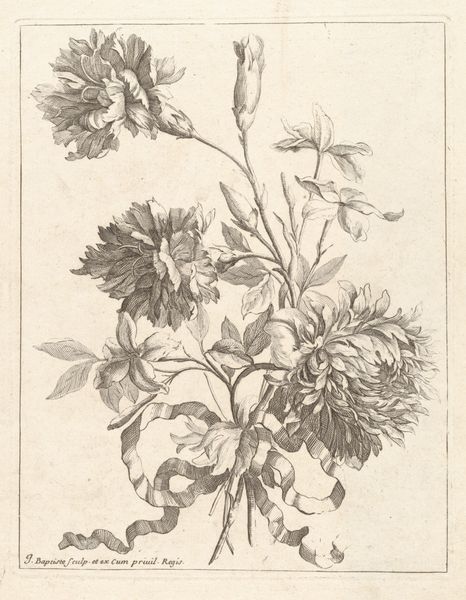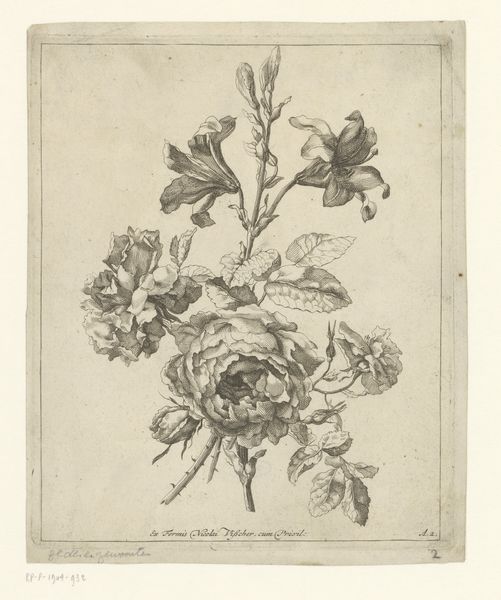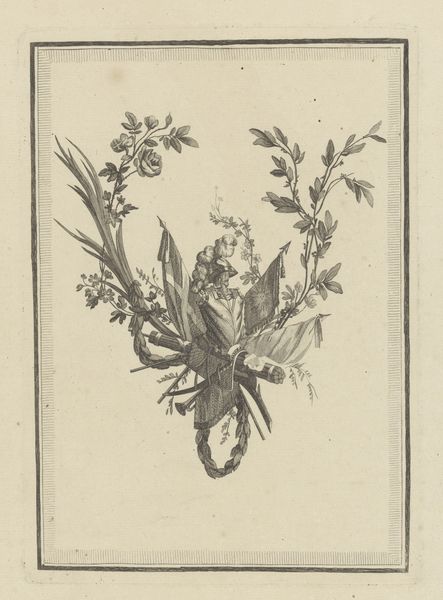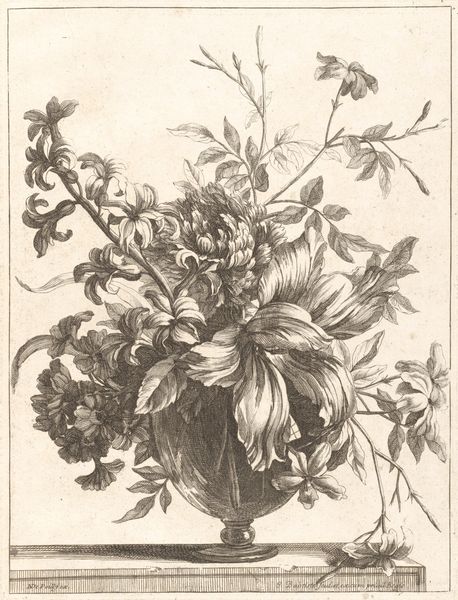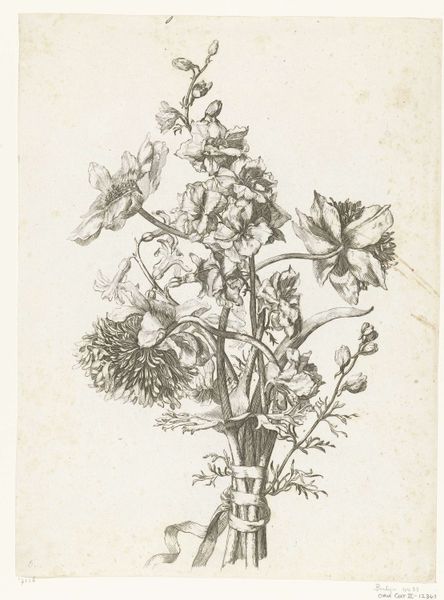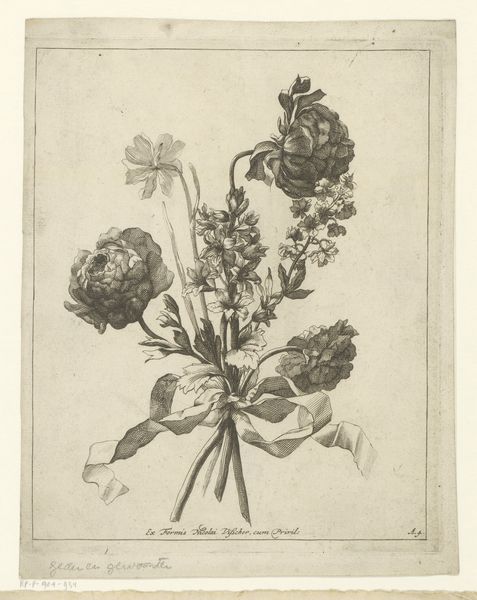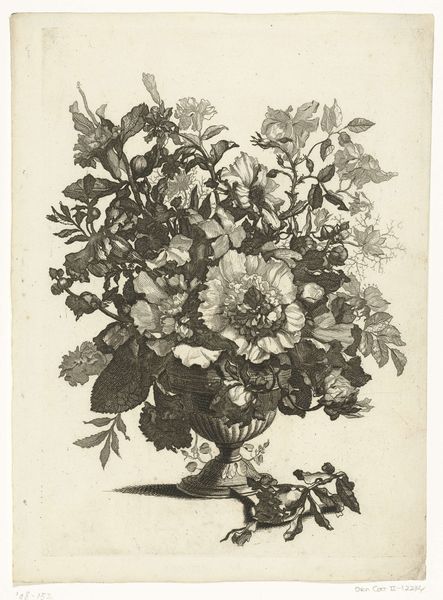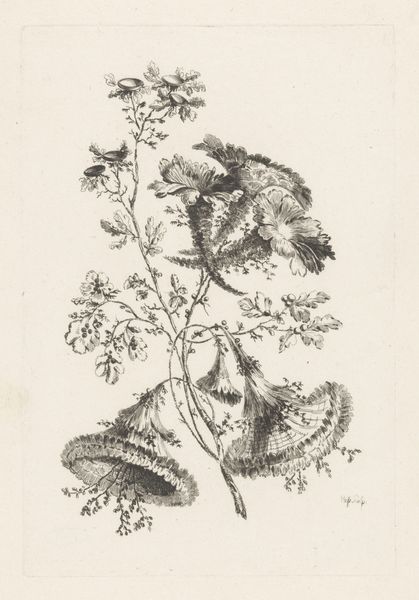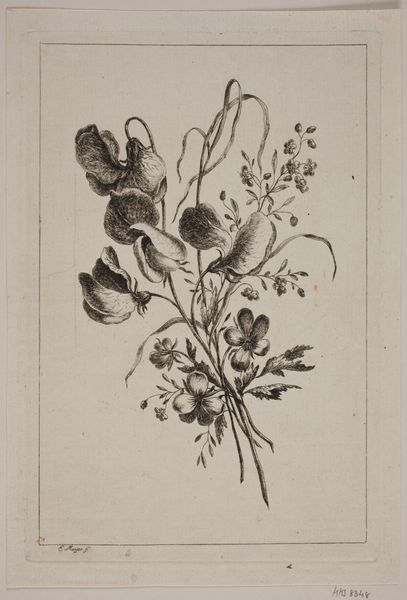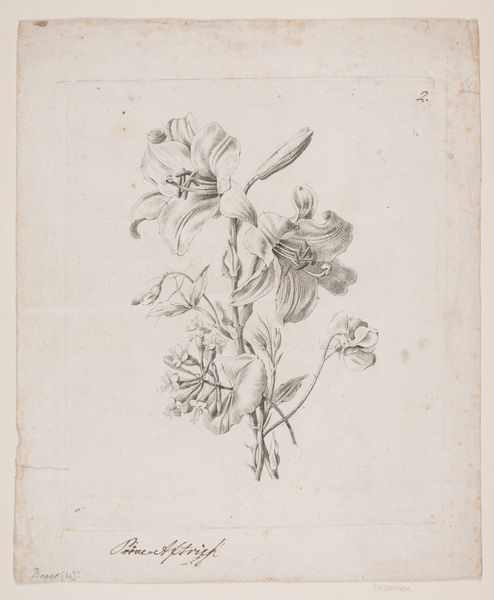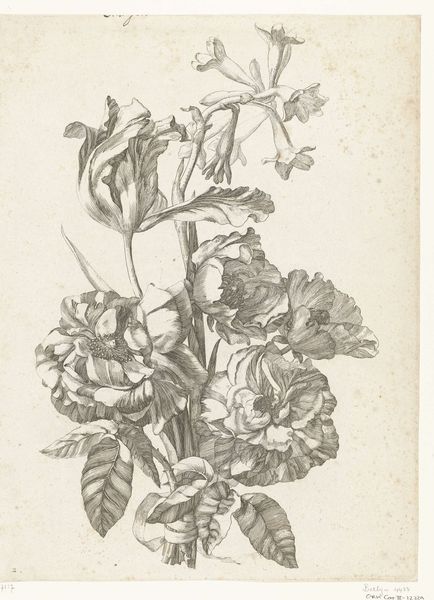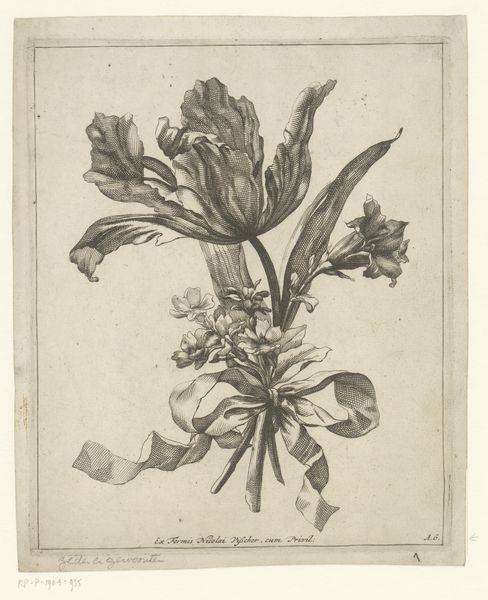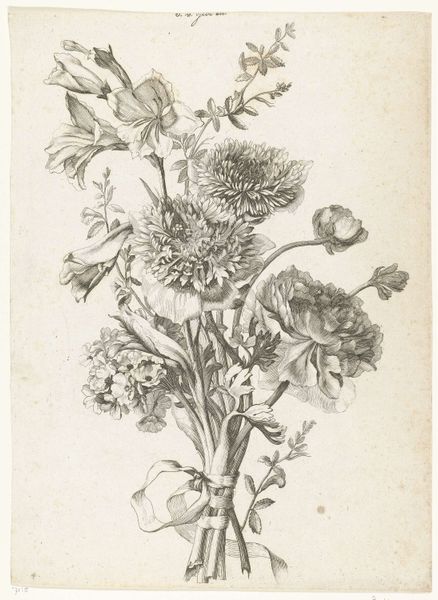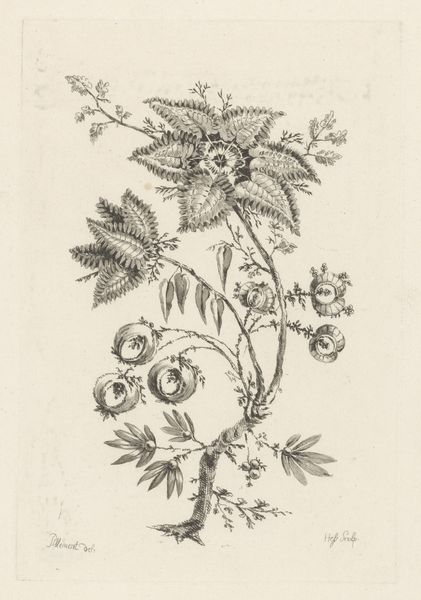
print, engraving
#
baroque
# print
#
old engraving style
#
engraving
Dimensions: height 200 mm, width 164 mm
Copyright: Rijks Museum: Open Domain
Editor: Here we have a print entitled "Drie pioenrozen en papaverknop," or "Three Peonies and Poppy Bud," made between 1679 and 1702. It’s an engraving and its creator is anonymous. It feels like a scientific illustration. What jumps out at you about it? Curator: It's interesting to view this botanical print not just as a piece of art, but as a reflection of the burgeoning scientific curiosity of the late 17th and early 18th centuries. Consider how these meticulously crafted images served as vital tools for cataloging and disseminating knowledge about the natural world. How do you think this print circulated, and what was its likely audience? Editor: Well, given the detail, it might have been used in botanical studies, maybe something to do with medicine? It feels aimed at scientists and apothecaries rather than decoration for wealthy patrons. Curator: Precisely. The relatively democratic medium of print made such information more accessible than, say, a unique oil painting commissioned by the elite. Prints like these helped standardize knowledge, contributing to the rise of a shared scientific culture across Europe. It's also interesting to observe the choice of flora—do peonies and poppies carry specific symbolic meanings in the cultural context of the time? Editor: That’s a great question, I wonder… they definitely strike me as both beautiful and maybe a bit ephemeral because flowers don't last that long, they are signs of seasons passing. Curator: Exactly. These layers of meaning elevated the print beyond simple documentation, engaging viewers on multiple levels. What do you make of the signature line indicating Nicolas Visscher as the publisher? What was the role of print publishers during this era? Editor: So, was he like a modern art dealer or gallery owner? Curator: In a sense, yes. Publishers were instrumental in shaping the art market, determining which images reached the public and how they were framed. This piece really highlights the confluence of art, science, commerce, and the dissemination of knowledge. Editor: This makes me see it less as just a pretty picture and more of a historical document. I appreciate knowing that there's this whole network of information happening behind this picture. Curator: Precisely. Every piece of art exists within such a context.
Comments
No comments
Be the first to comment and join the conversation on the ultimate creative platform.
